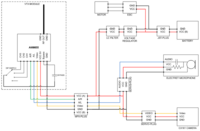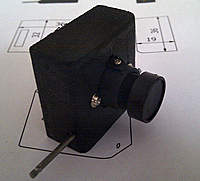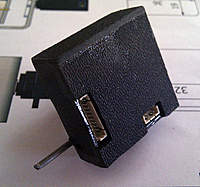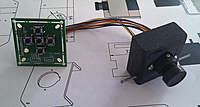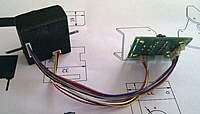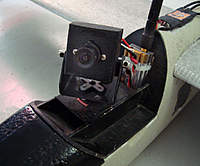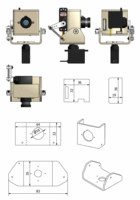|
|
|||||||||||||||||||||||||||||||||
|
|
Mini-HowTo
How to FPV: Newbies thread - New Multirotor tuning video
Newbies to FPV please post your questions in this thread and we will try to answer them!
In the USA, you are required by law to hold an amatuer radio license for all FPV transmitters (including UHF radios) unless specifically marked as FCC part 15 compliant. To my knowledge the only units that are legal for use without a HAM license are the TBS Greenhorn and the Iftrontech Nano Stinger. This page will be continually updated to ensure everything is relevant. No need to read the entire thread. It's all right here. We see the same questions repeated over and over again from people wanting to get into this aspect of aviation. Attached is a document I put together covering most of the questions newcomers have for FPV and included many of the questions they should have as well. The document deliberately leaves equipment out of most of it's pages. The reason is that the equipment is usually subject to opinion on what is good and what is not. I also am affiliated with certain FPV vendors and do not want to appear biased in anyway. However, I will say that Hobby King equipment historically has performed measurably worse than anything the FPV vendors sell. When in doubt, buy from a specialized FPV vendor. How-to videos! FPV Basics
Selecting the proper airframe
FPV video system and Frequency selection
FPV Antenna Selection
How to build a ground station
Advanced FPV systems
How to wire it up:
Making your first flights:
Radio Communication Explained
How to make a long range flight (and what can go wrong in the process)
How to make a night flight
What tools you need (and how to use them)
Trouble Shooting your video link
FPV Racing - Getting the most in the air that you can
Multirotor tuning how-to
Advanced Multirotor PID tuning
What makes a good FPV system? There are two items that make the greatest impact on the enjoyment of your FPV plane: The camera, and the antennas you select. Selecting a good camera that performs well in different lighting conditions will allow you to see well at dusk where many cameras simply black out all ground definition. 420 TVL resolution is good enough for most purposes. It is better to select a camera with excellent BLC (back light compensation) and color saturation than one with a high resolution. Antennas are the critical link between you and the aircraft. The proper selection of antennas is perhaps the most important thing to FPV flying. The antennas are the difference between a long range system capable of 20 miles and a system only good for short range. Most range issues are in fact a result of multipathing of the signal. People having problems with multipath interference should consider using a circularly polarized antenna system or a directional antenna of moderate gain. The following items are listed in order of importance to your FPV flying success: 1. Proper selection and use of the antenna system. High gain omni antennas are absolutelty horrible for FPV! 2. Proper selection of a performance camera 3. Quality video receiver 4. Use of proper filtration equipment (ie chokes, ferrite rings, power filters, ect) 5. Selection of a good, familiar airframe (this does not necessarily mean a basic plane) 6. Selection of the proper VTx and proper power Help us help you fix your problem/answer your question I must get 10 of these Emails a day asking what the problem is or what range to expect. 9 times out of 10, I can't answer it. Why? The person doesn't understand the information they need to provide in order to get a fairly accurate answer. RF is not easy nor intuitive, but a little knowledge goes a long way. Here's what you do: If you have a problem post the following: - A picture or several pictures displaying how it is set up - A photo of your ground station as you would have it set up for flight - Several photos taken of you while flying from different angles. I need to know what your surroundings are and see your ground station in action. - A short video clip of the problem. - Full description of equipment used (frequency, antennas, radio system) - A description of your flying location - Did you turn off your cell phone or leave it in your car? Cell phone? Really? Yes! They operate very close to the bands we use for FPV. Turn it off or leave it in the car. If you want a range estimate we need the following: - Frequency - Tx power - RX sensitivity (if not known, simply telling me the RX you use with a link is ok) - Antennas you plan to use - A few photos of the area you wish to fly - A description of your intended surroundings - How you intend to fly (high and straight, low, doing stunts) Other resources: For a glossary of terms and troubleshooting guide, go here: http://www.webx.dk/rc/uhf-link3/explain-names.htm An excellent source of information is here in secret squirrel's blog. Some advice from a very experienced FPV pilot: Team Black Sheeps system philosophies for success A very complete guide on what is possibly the most popular FPV plane: Kevin's FPV Easy Star thread Additionally, there is a wealth of information on everything from antenna construction to scratchbuild airframes to motor design in IBCrazy's blog. -------------------------------------------------------------------------------------------------------------------------------------------- The range equation - Use this equation to estimate how far (in miles) you will be able to achieve: Range capability in miles = 1/2 + number of hours under the hood/40 + number of study hours/100 + hours spent talking with an experienced FPVer/20 Thus if you have 24 hours of airtime experience under the hood, 50 or so hours of research, and an afternoon talking to a highly experienced FPV pilot, you can expect to be able to make a 2 mile flight successfully. Have fun in your ventures, -Alex Please note: I am not endorsing any specific person or vendor. I do this of my own free will and desire to help out the newcomers to the community. |
||||||||||||||||||||||||||||||||
|
|
Last edited by IBCrazy; Dec 08, 2015 at 09:14 AM.
|
||||||||||||||||||||||||||||||||
|
|
|
|
|
|
|
Alex,
Good document. May I suggest adding: What to consider when picking a suitable flying location when learning how to fly FPV. I'm sure you have you're own list. I consider factors like: 1. Know your airspace. 2. Minimum "uncovered" people 3. Minimum Obstructions 4. Stay away from Full Scale Airports, unless you have permission 5. Soft Grass or Sand 6. Recognizable Land Marks Understanding the rules that we, fall under in the US, which is for now are FAA AC 91-57 and if you fly at an AMA field, AMA Code 550. Thanks |
|
|
Last edited by scrtsqrl; May 05, 2011 at 09:38 AM.
|
|
|
|
|
|
I can contribute this simple wire diagram of how I hooked up power, audio and video in my HK Mini Swift. It includes how I installed a 100mW Airwave VTx module (AWM655-TX). Buying a separate VTx module is a great way to cut costs and it's not difficult at all.
In the finished model I used an amplified microphone instead and didn't have to install a LC-filter because the picture was perfect. I'm sorry if the schematics isn't how a professional would draw it, but it made my install easier anyways. |
|
|
Last edited by boopidoo; Dec 16, 2010 at 08:48 AM.
|
|
|
||
|
|
I think that Sanders LC-filter is something that would benefit this thread.
Quote:
|
|
|
|
||
|
|
|
|
|
Getting help from a vendor
So you're having problems with a product and seeking help from the vendor. You've seen time and time again that many vendors seem to not respond. Why? How do you be sure you get a response?
1. Make your inquiries as brief as possible with all information. Be straight to the point but polite. Include your order number, your expectations (ie replacement, repair, ect), your mailing address as well as a brief explanation of the problem. DO NOT GO INTO DETAIL UNLESS PROMPTED AND RESIST THE TEMPTATION TO BE RUDE!!! 2. Be realistic about your issue. Vendors have much going on. They are not in front of their computers 24 hours a day. They take weekends and holidays off. They also get many inquiries per day and many of them are from people who are too lazy to do any reading. They also get a lot of Emails accidentally kicked to our SPAM folders that they legitimately miss. 3. Do your research first. Take the time to read what is on the vendor's site. Many times the instructions and everything you need to know is posted right on the website somewhere. Understanding a systems limitations is huge. An educated customer is a good customer (to an honest vendor at least). ----------------------------------------------------------- Example of a good inquiry: To whom it may concern, I recently ordered your cloverleaf antenna for my aircraft and I was hoping for more improvement in performance than what I am seeing. I still have disturbances in my goggles. I am struggling to make it past 1 mile. The antenna did not appear damaged in shipment. I am flying in a rural area with mostly open fields. There are no transmission towers nearby that I know of. I am afraid your antenna is defective. Can I send it back to you for testing? My current set up is as follows: 1280 MHz 700 mW system from XYZ vendor: <link> Using an 8dbi pacth antenna on the RX: <link> My order from you is as follows: Order# 1001 August 28th, 2011 1 - cloverleaf antenna 1280 MHz 1 - 6" antenna extension cable Can you help me? -Customer --------------------------------------------------------- Example of proper resopnse: Sorry for the delay in responding, I was away for the weekend. At first glance you are seeing multipath interference, but it could be noise floor or a Fresnel zone violation. It's hard to tell. If you can make a brief 1 minute video on the disturbances and send a picture of your plane and ground station, I can probably help. You are using a circular antenna with a linear one, so this increases multipath interference. A helical antenna or CP patch would eliminate this issue and would be a direct replacement for your linear patch. Please see the tutorial on the website for more information on this. However, if your problem is noise floor (although at your frequency and location it does not sound like it), you might need to switch frequencies. If you'd like to send your antenna back for testing I would be happy to test it for you so long as you pay return shipping if everything turns out ok. I can test your patch too if you like. If you do send it back, please include a copy of this Email. Otherwise I'll be guessing at what I'm supposed to do with this equipment. I hope that helps, -Alex |
|
|
Last edited by IBCrazy; Sep 08, 2011 at 09:56 AM.
|
|
|
||
|
|
That is so so so true.
maiden your plane and fly it many times then put your fpv gear into it. for sure rule #1 rule #2 do all your fpv ground tests before actual install #3 fly non fpv with everything set up and then review the video #4 fly fpv with a spoter and stay high #5 enjoy your fpv experience  rule #0 don't take on a plane you have no idea how to fly or have no experience with and install fpv gear in and then maiden  only a fool would do that only a fool would do that Quote:
|
|
|
|
||
|
|
|
|
|
Hello,
What is a good camera? - what specs should I look for? I want a camera that has a good resolution (I think). What about starting fpv with a gopro camera (without video transmitting) first? - then use the av out on the gopro camera to stream video later, when I get my first video tx/rx?? - I know gopro is quite expensive, but it does not broke easily? - and last for a long time!? Normally I dont crash, but theres always a risk...  Will the picture be gradually more bad when distance to the plane increases? |
|
|
|
|
|
|
|
|
My suggestion, as I wrote in your thread, is to buy an inexpensive camera such as the CX-161 or a Sony board camera. You will crash, better to destroy a $20 camera then an expensive GoPro. Even if the GoPro is sturdy it will not survive all crashes. So no, I wouldn't use a GoPro as the first FPV-camera.
|
|
|
|
|
|
||
|
|
Quote:
http://www.securitycamera2000.com/pr...ide-2.1mm.html ^^ $52 for the camera above as an example. Yes Hobby King sells the same uncased one for $16 + S&H.. However you'll be lucky if it survives a crash! On a side note, don't we have a FPV Wiki? |
|
|
|
||
|
|
||
|
|
Quote:
I will see about adding a glossary of terms. That hadn't occurred to me. |
|
|
|
||
|
|
|||
|
|
Or you could put it in a Kinder Egg:
|
||
|
|
|||
|
|
|
|
|
I would like to add KYDEX as a preferred material when building stuff for FPV. It's easy to work with and can be used for a lot on a FPV model, for example a camera enclosure. The material can be cut with a scissor and when heated up with a heat gun or even a candle/lighter will work can be bent very easily. It becomes hard plastic again quite fast so a mount like the one below is easily made in about an hour including cutting drilling and trimming.
I've bought my KYDEX from www.knifekits.com t=0.06in and 0.08in, the camera enclosure is made with t=0.06in. I've done some drawings on a pan/tilt-mount as well as a camera enclosure which fits the popular uncased cameras. ImagesView all Images in thread |
|
|
Last edited by boopidoo; Dec 20, 2010 at 03:26 AM.
|
|
|
|
|
|
Ferrite cores are sold at dpcav.com: http://www.dpcav.com/xcart/search.ph...=search&page=1
|
|
|
|
|
|
|
|
|
Well I have changed opinion again!
 For now, I think I will go for a camera that I will be happy to use, otherwise I will buy a new camera very soon.. I hope that I will not crash ( that hard)..  I have tied to search for cameras and watched videos on youtube, I found these cameras: http://www.bevrc.com/bev-wdr700-high...pal-p-171.html 120$ and.. http://hobbywireless.com/cart/index....roducts_id=394 115$ I will not spend more mony on the camera, but I am alwas willing to spend less if theres some cameras that is just as good as these... or even better... Is it a bad idea to use main battery for all electronics in the plane? - even if I'm using a separate ubec? |
|
|
|
«
Previous Thread
|
Next Thread
»
| Thread Tools | |
| Similar Threads | |||||
| Category | Thread | Thread Starter | Forum | Replies | Last Post |
| Discussion | Can this cam be used for FPV ? | SpookiePower | FPV Talk | 11 | Aug 16, 2016 11:08 PM |
| Discussion | How to calculate flight time - guide | ikorman | Multirotor Drone Talk | 16 | Jun 26, 2016 07:34 AM |
| Cool | How cool would this be for FPV | Kai_Shiden | FPV Talk | 4 | Feb 18, 2016 09:02 PM |
| Discussion | How many FPV pilots in the world? | rbmaze | FPV Talk | 10 | Aug 03, 2011 06:16 AM |
| Poll | Would you be interested in buying Ready to Fly FPV airplanes from a new FPV store? | FPVNOW | FPV Aircraft | 36 | Oct 06, 2010 08:56 PM |
